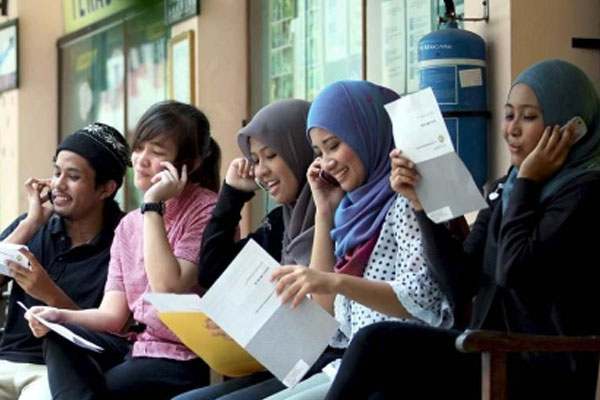The 10 shifts in the latest Higher Education Malaysia Education Blueprint that WILL affect you

Afterschool Team
April 7, 2015
Prime Minister Datuk Seri Najib Razak today launched the Malaysian Education Blueprint (Higher Education) 2015-2025, aimed at preparing the country's tertiary education system to meet the challenges of the future.
Najib said the higher education system's overarching goal was to achieve three main targets, dubbed the three Bs: Bakat (talent), Benchmarking to global standards, and Balance.
The latest blueprint introduces 10 shifts in support of the five system aspirations that focuses on access, equity, quality, efficiency and unity:
1. Produce holistic, entreprenurial and balanced graduates
Malaysian students are expected to not only be highly knowledgeable in whatever courses they take but also uphold good moral values in their daily lives. Encouraging the paradigm shift among graduates from being job seekers into becoming job creators themselves.We have provided tips on how you can start building your own career path with an SPM foundation HERE.
Main strategies:
- Enhancing the student learning experience
- Devising an integrated cumulative grade point average (CGPA) system
- Creating opportunities for students and academic staff to acquire entrepreneurial skills and pursue their own enterprises
2. Focus on talent excellence
Introduction of a career path for researchers, educators, leaders and professional practitioners with the mentorship and co-teaching of corporate figures such as Tan Sri Dato' Azman Mokhtar and Tan Sri Tony Fernandez. Learn their skills and emulate them for success HERE.
Main strategies:
- Positioning Higher Learning Institutions (HLIs) according to their recognised areas of institutional excellence
- Enabling HLIs to develop multi-track career pathways
- Providing best practice guidelines to support both public and private HLIs
3. Become a nation of lifelong learning
Provide more flexible learning opportunities, increase quality benchmark of available programmes and create awareness and interest towards learning among the society. You are never too young nor too old to pursue education!
Main strategies:
- Creating a framework for recognising prior learning
- Launching stakeholder engagement programmes
- Continuing to provide financial support to disadvantaged groups and tax reduction incentive schemes to companies
4. Embrace high quality graduates in education and vocational & technical training (TVET)
Develop high quality TVET curriculum pioneered by the related industries together with an improved partnership model which synchronizes the Ministry with TVET providers. Vocational and technical graduates are highly in demand as the construction industry expands.
Main strategies:
- Enabling industry to lead curriculum design and delivery
- Enhancing coordination across the Ministry’s various TVET providers
- Coordinating with other ministries and agencies offering TVET programmes
5. Ensure financial sustainability
As costs continue to rise, Malaysia will need to deliver quality higher education to almost twice as many students if it is to reach the highest enrolment levels among ASEAN nations. Keep yourself up-to-date with the latest scholarships available for Malaysian students.
Main strategies:
- Improving the funding formulae for public HLIs
- Enhancing PTPTN performance and sustainability
- Incentivising creation of endowment and waqaf funds
6. Governance empowerment
The Ministry will be shifting it's role from being a tight controller to becoming a regulator and policy maker, providing more autonomy for tertiary education institutions. This means more universities and colleges will be able to improve their capacity to produce unique and world-class graduates.
Main strategies:
- Defining five-year (3+2) outcome-based performance contracts between Ministry and HLIs
- Strengthening quality assurance in the private sector (e.g: SETARA and MyQuest)
- Moving decision rights from the Ministry to the leadership of public universities
7. Provide ecosystem for innovation
Malaysia ranks 43rd out of 110 countries on number of patents, and engagement levels with industry and community are still not as intensive or widespread as desired. Prioritizing partnership between government, university, industry and community agencies (Quadruple Helix of academia). This will ensure better cooperation and a steady flow between the academic world and the work force.
Main strategies:
- Focusing on creating scale and growth in strategic research areas linked to national priorities for economic growth
- Playing a catalytic role in securing investments
- Incentivising HLIs to establish supporting systems for the commercialisation of ideas
8. Achieve global excellence
Malaysia is top 10 destination for international students. Malaysia needs to raise the nation’s higher education brand even further, from an attractive destination known for good value for money and quality of life, to one that is also recognised, referred to, and respected internationally.
Main strategies:
- Collaborating with other ministries and agencies to improve and streamline immigration procedures and processes
- Increasing the proportion of postgraduate international students
- Strengthening the promotion and marketing of Malaysia’s higher education system
9. Globalize online learning and transformation of higher education delivery
Malaysia is in a good position to harness the power of online learning to widen access to good quality content, enhance the quality of teaching and learning, lower the cost of delivery, and bring Malaysian expertise to the global community.
Main strategies:
- Launching Massive Open Online Courses (MOOCs) in subjects of distinctiveness for Malaysia
- Making online learning an integral component of higher education and lifelong learning
- Establishing the required cyber infrastructure
10. Transformed Higher Education learning
Malaysia needs to move from a system focused on inputs and a separation of private and public institutions, to a harmonized higher education system focused on delivery, accountability, transparency, and outcomes.
Main strategies:
- Launching the University Transformation Programme by working in close partnership with pilot HLIs
- Restructuring the Ministry organisation to focus on core functions, create stronger links between HLIs, the community, and industry
- Enhancing MQA processes and quality assurance frameworks, and eliminating unnecessary red tape
The first four Shifts focus on outcomes for key stakeholders in the higher education system, including students in academic and TVET pathways, the academic community, as well as all Malaysians participating in lifelong learning. The other six Shifts focus on enablers for the higher education ecosystem, covering critical components such as funding, governance, innovation, internationalisation, online learning, and delivery.
Read or download the full version of Malaysia Education Blueprint (Higher Learning) HERE (PDF file).













